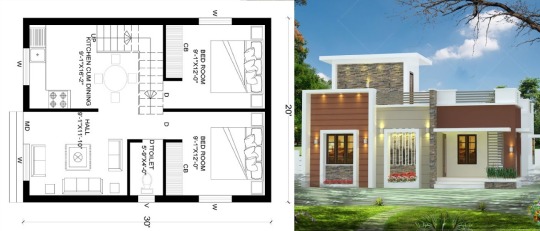#40x60_house_design
Explore tagged Tumblr posts
Text
Boldness of Top Architectural Firms in Bangalore

Experience the boldness of top Architectural firms in Bangalore that offers high-quality Architectural services with huge potential and impactful results
The built environment weaves a captivating tapestry, featuring diverse design styles and architectural movements that have thrived for centuries, journeying across continents and adapting to various climates, landscapes, and cultural necessities also practiced by the Top architecture company in Bangalore
Architecture, the beautiful blend of art and skill, lays the groundwork for designing marvelous buildings. Before the construction commences, this creative process takes center stage, resulting in an array of architectural styles throughout history, each uniquely fashioned yet sharing the common goal of providing humans with a shelter to live and work comfortably.
In this blog, we are going to walk you through the top essential & fascinating facts about the types of Architecture and unique features of the best architectural firm in Bangalore
Let's take a journey through time and explore 15 of the most beloved architectural styles, ranging from the iconic structures of ancient Greece and Rome to the contemporary marvels shaping today's skylines. Each style tells a fascinating story, encapsulating all kinds of architectural services
Classical Architecture
Classical Architecture is the harbinger of the entire architectural design, which originated in the 5th century BC in Greece and around the 3rd century AD in Rome. Characterized by symmetry, columns, rectangular windows, and marble, to name a few. For centuries, architects have drawn influence from these civilizations and incorporated traditional ideals into subsequent styles of architecture.
Tudor Architec build
Tudor architecture refers in part to the period between 1485 to 1558 when craftsmen built sophisticated two-toned manor homes with a combination of Renaissance and Gothic design elements. This transitional style continued to pop up in villages throughout England until Elizabethan-Tudor architecture took over in 1558.
Neoclassical Architecture
Neoclassical architecture is defined as a style of buildings constructed during the revival of Classical Greek and Roman architecture that began around 1750 and flourished in the 18th and 19th centuries. It is characterized by grand scale, simple geometric forms, Greek (especially Doric) or Roman detail, dramatic columns, and blank walls. Its antique simplicity was in reaction to the excesses of the Rococo style.

Cape Cod Architecture
Cape Cod architecture was a widely prevalent subject introduced by the English colonists during the 17th century. The major features consist of a basic rectangular shape, one story plus a half-story, second-floor steeply pitched, roof Central chimney center door, Low ceilings shutter-clad, and dormer windows.
Italianate Architecture
Italianate architecture, emerging in the 19th century, fused Italian Renaissance elements with picturesque influences, breaking from strict classical rules. Its romantic allure and widespread popularity endured in Europe, the British Empire, and the United States, notably after the Civil War.
Italianate architecture, a popular 19th-century style, drew inspiration from the Italian Renaissance and Tuscan farmhouses, offering a romanticized alternative to classical architecture with less rigid forms and natural landscaping. It is a category within the Victorian era (1837-1901), characterized by architectural elements from a nostalgic past.
Greek Revival Architecture
Greek Revival is a type of architecture in the United States that took inspiration from the ancient Greek temples built around the 5th century B.C. This style became very popular from 1825 to 1860, which was around the time the Civil War began. It was the first major architectural style that was widely used across the entire country, starting from the East Coast and spreading to the West Coast. The buildings in this style were admired for their balance, simple designs, and elegance.
Victorian Architecture
Victorian architecture, originating in England during Queen Victoria's reign (1837-1901), is characterized by its ornamental exterior with steep roofs, bay windows, and wraparound porches, while interior designs feature grand staircases, intricate wood paneling, and decorative fireplaces. This style spread to various countries, leaving a significant architectural influence in North America, Australia, and New Zealand.
Arts and Crafts Architecture
The Arts and Crafts movement emerged as a response to Victorian excess, celebrating handcrafted beauty and natural materials. It influenced various disciplines and popularized styles like Craftsman and Bungalow homes, embracing simplicity and thoughtful design for working-class families.
Beaux-Arts Architecture
The Beaux-Arts architecture, born at Paris' École des Beaux-Arts in the late 1800s, made its mark in the United States during the Gilded Age with grand, ornate structures, drawing from Roman, Greek, Renaissance, and Baroque influences. Musée d'Orsay stands as a prominent Beaux-Arts example, showcasing its theatrical and opulent features.
Art Deco Architecture
Art & Deco drags its origin to the 1920s and 30s. It took very little time to spur. Originating in Paris and later influencing iconic American skyscrapers, boasts ornate geometric details, opulent colors, and the use of materials like stucco, terracotta, glass, steel, and aluminum.
Bauhaus Architecture
Bauhaus architecture emerged from Walter Gropius' influential German school in the early 20th century, seeking to revolutionize design after World War I. It blended art, crafts, technology, and functionalism, promoting a "form follows function" approach and embracing simplicity.
Industrial Architecture
Industrial architecture emerged during the Second Industrial Revolution, characterized by functional design with large open spaces, high ceilings, and the use of raw materials like concrete and metal, laying the foundation for Modern Architecture.
Modern Architecture
Modern architecture of the early to mid-20th century embraced simplicity, functionality, and integration with nature, featuring clean lines, open spaces, and abundant use of materials like steel, concrete, glass, and wood. Influential architects like Frank Lloyd Wright and mid-century designers revolutionized the field, leaving a lasting legacy seen in today's popular mid-century modern furniture.
Brutalist Architecture
Brutalist architecture, born in the 1950s-1970s, features raw concrete structures with bold, monochromatic designs, devoid of ornamentation. Though controversial, its impact can be observed in modern product and interior design, furniture, objects, and web design.
Contemporary Architecture
Contemporary architecture is a diverse and innovative style that breaks away from past conventions, embracing unique forms, advanced materials, and sustainability, while incorporating computer-generated designs and 3D printing. Custom-built homes can also adopt contemporary elements without being strictly bound by the style.
You will find these dashing Top architecture designs in Bangalore in dashing staturethat infuse a cluster of an architectural designs in Bangalore most particularly in Rajajinagar under the umbrella of Top architecture design in Rajajinagar
For more queries : contact us at: 080-24419060 Or Email us at : [email protected] Or check in our website : www.saventurebiz.com
#architecture#30x40_duplex_house_plans#40x60_house_plans#40x60_house_design#top_interior_design_in_rajajinagar#high_quality_commercial_interiors_in_Bangalore#north_facing_house_vastu_plan_30x40#West_facing_house_plan_30x40_Vastu#30x40_north_facing_house_plans#east_facing_vastu_house_plan
0 notes